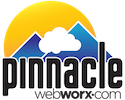Inbound marketing focuses on creating quality content that pulls people toward your company and product, where they naturally want to be. By aligning the content you publish with your customer’s interests, you naturally attract inbound traffic that you can then convert, close, and delight over time. – Hubspot
Inbound vs Outbound
 Inbound marketing is a concept introduced by HubSpot CEO, Brian Halligan. It describes a form of web communication that provides information and resources that establish you and your brand as experts and “thought leaders” in your market. The result: customers will be magnetically drawn (inbound) to your resources, your site and your products.
Inbound marketing is a concept introduced by HubSpot CEO, Brian Halligan. It describes a form of web communication that provides information and resources that establish you and your brand as experts and “thought leaders” in your market. The result: customers will be magnetically drawn (inbound) to your resources, your site and your products.
By contrast, outbound marketing is interruption-based marketing that pushes a product or service on customers. It requires a marketing medium with a large following (e.g., radio, Newspaper, TV, direct mail) and periodically interrupts that following with ads in the hope that they will convert and become customers. Outbound marketing is reaching an increasingly reduced audience. Here are some facts:
- People fast forward through TV commercials
- Many 25–35 year-olds are clicking away from websites with lots of advertising
- Hundreds of millions of people are on the national Do Not Call Registry
- Almost half of all direct mail does not get opened
Permission-based Marketing
Permission-based inbound marketing offers the highest return for your inbound marketing efforts This is how it works:
- Concentrate on mediums where your audience has given you permission to communicate with them. (subscription email marketing, blog subscribers, social media, webinar attendees) Your audience will be smaller but friendlier, because they have already said they want to hear from you.
- Write compelling web content that answers the questions people are asking about your industry or product, and spread that content around the web in anticipation of the question being asked. Use targeted keywords to find the questions potential buyers might be asking about your products. These buyers are looking for the answers that your website is providing, so the conversion rate to customers is potentially high.
It is time to start inbound marketing and “get found” by people who are curious and are asking questions about your industry or product. To do this you need to set up your website as an “information center”. Become the authority in your field and provide expert content and articles that will attract visitors through search engines, social media and blogging. Do this well, and your audience will seek out your advice and your products.
